Abstract
Investigations were undertaken on rat lymph node cell suspensions using cell electrophoretic techniques: (a) to examine the specificity of antigen—antibody binding, (b) to determine any relationship between the electrophoretic mobility pattern and antibody production, and (c) to estimate the potentiality of a single cell to produce antibody to more than one antigen at the same time. The results, in brief, indicate that a drastic reduction in the mean mobility is caused when the immunized cells are treated with the same antigen used for immunization. These interactions have antigenic specificity. In addition, it has been shown that not all cells in a lymph node produce antibodies and the percentage of cells that produce antibodies changes from day to day. The maximum response occurs between the 4th and 5th day of the second antigenic administration. Studies with simultaneous administration of two bacterial antigens support the concept that by and large a lymph node cell produces specific antibodies to only one antigen at a time.
Full text
PDF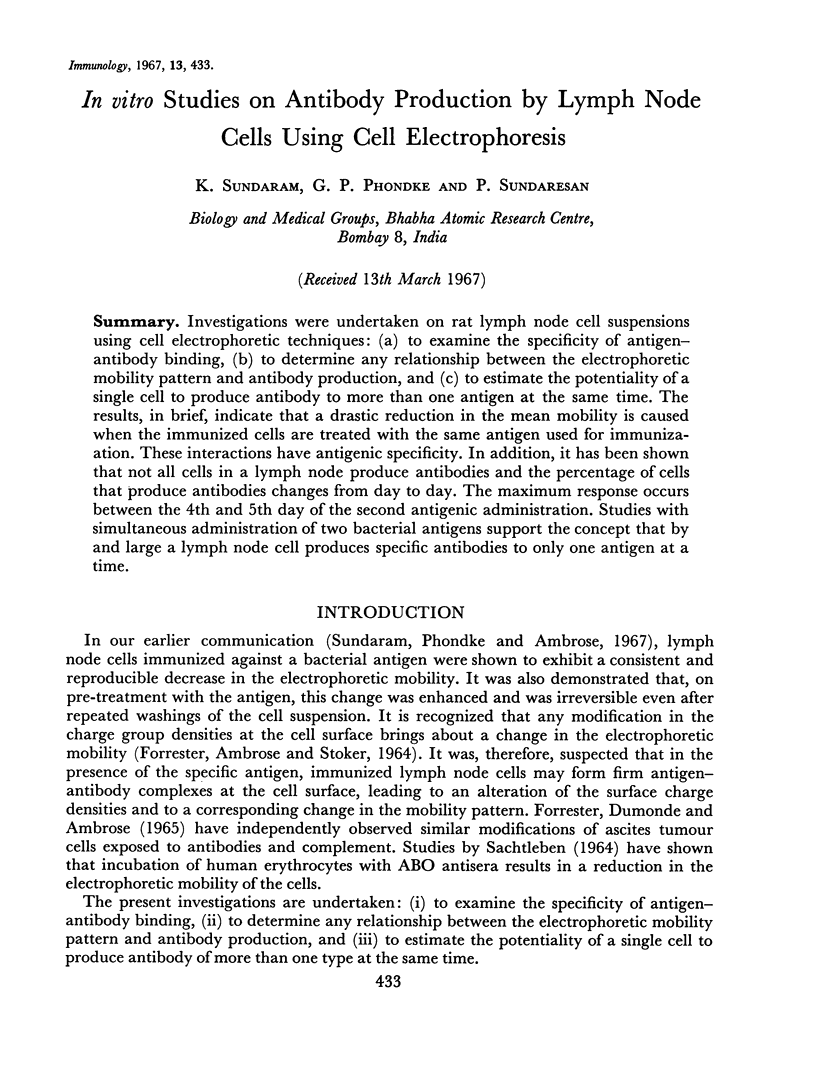
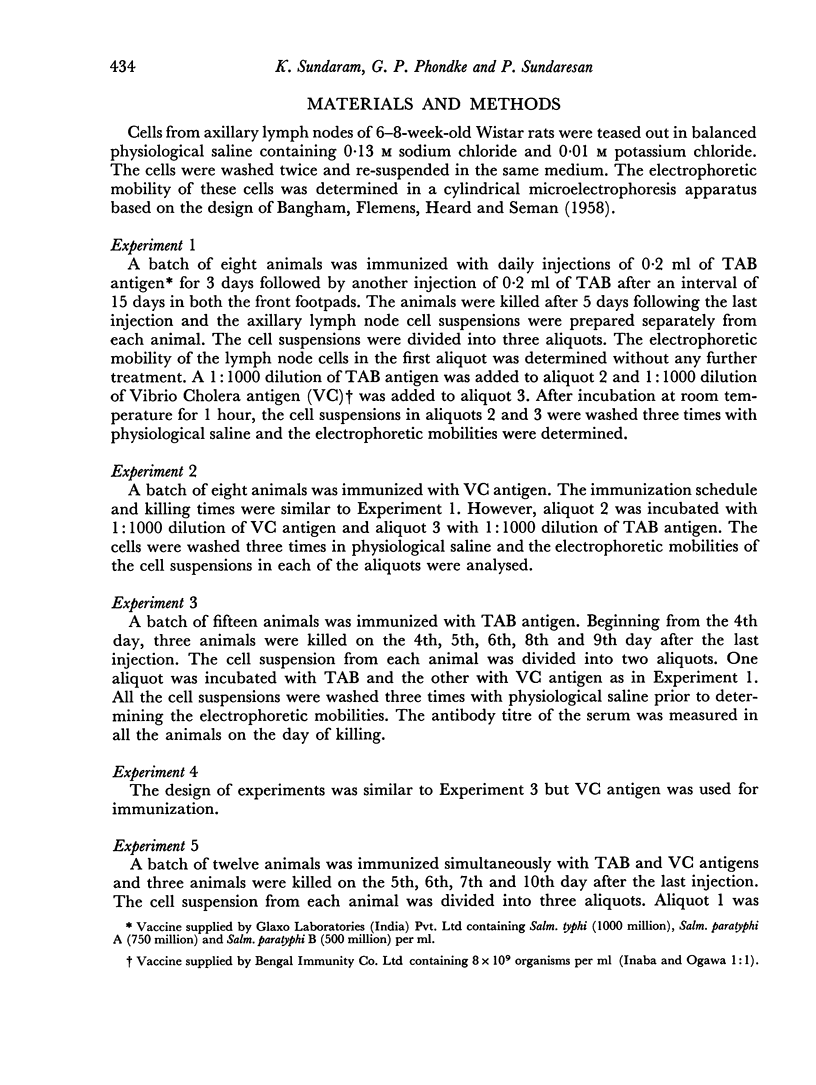
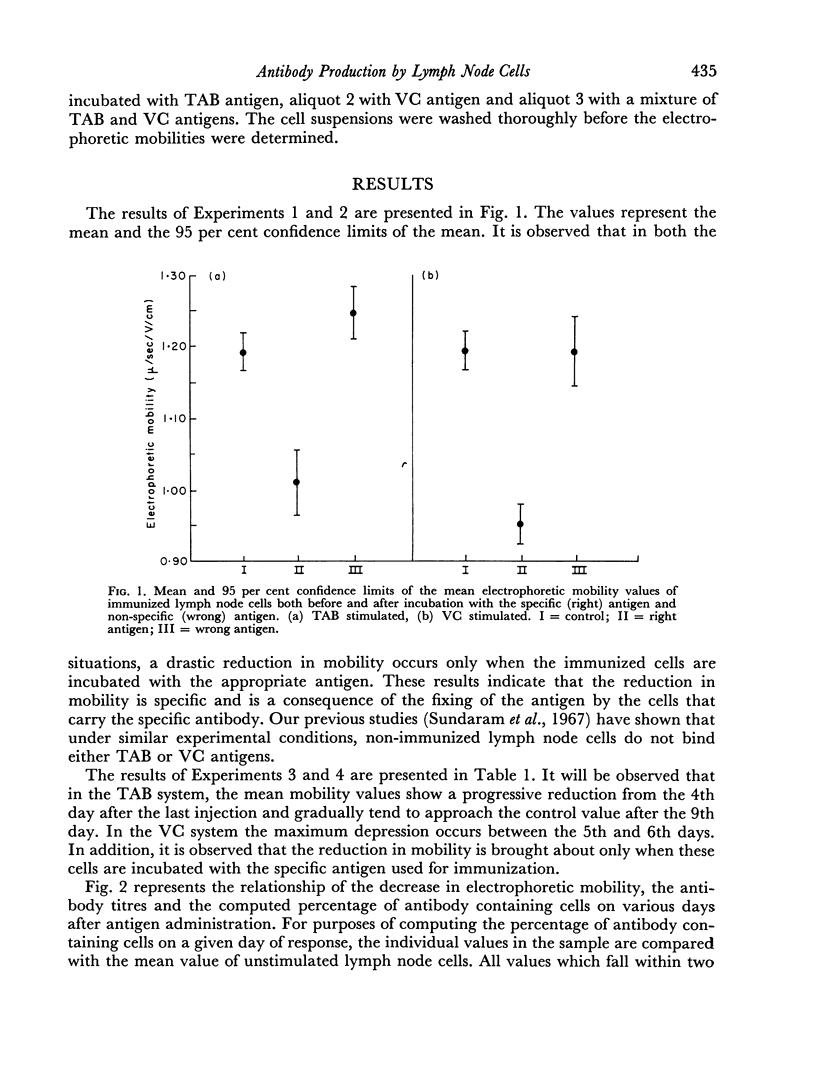
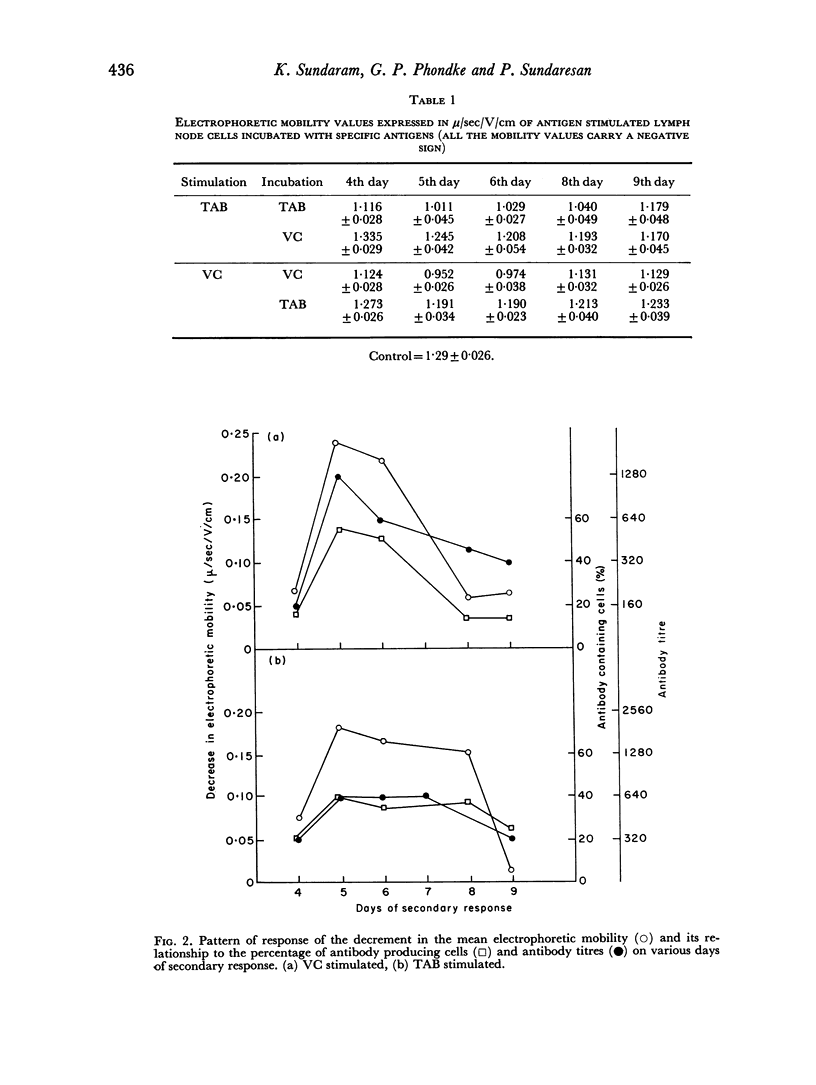
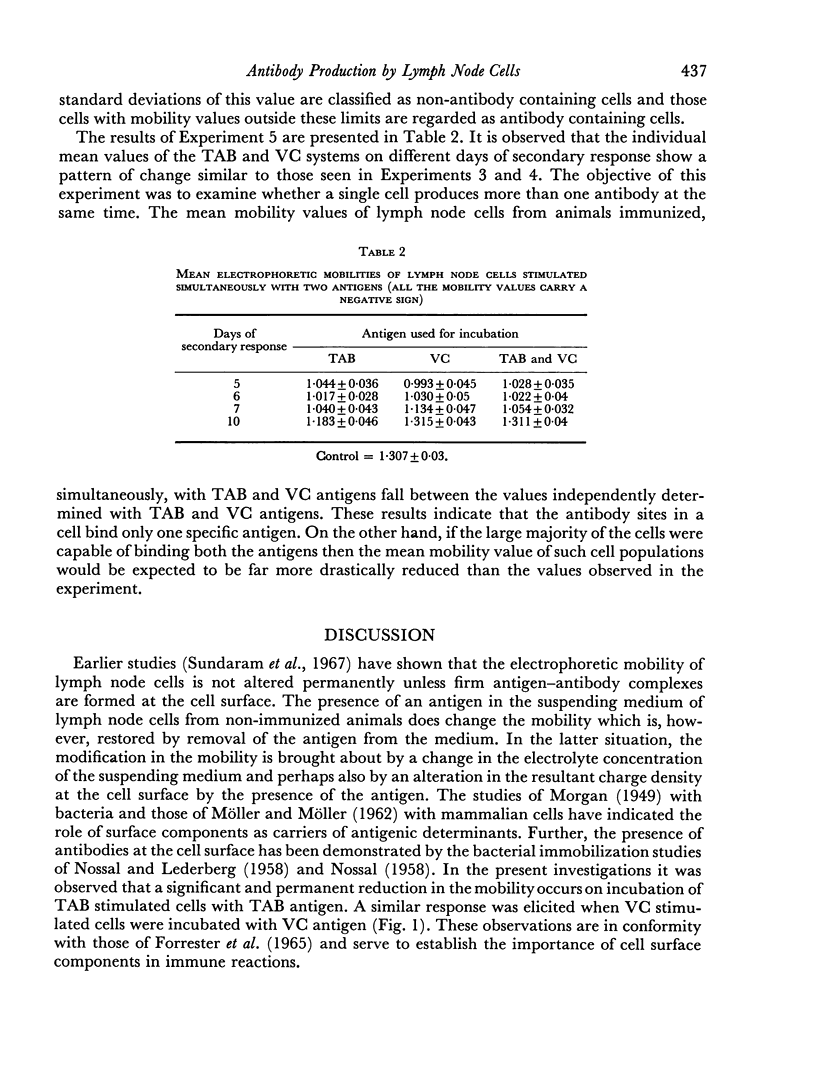
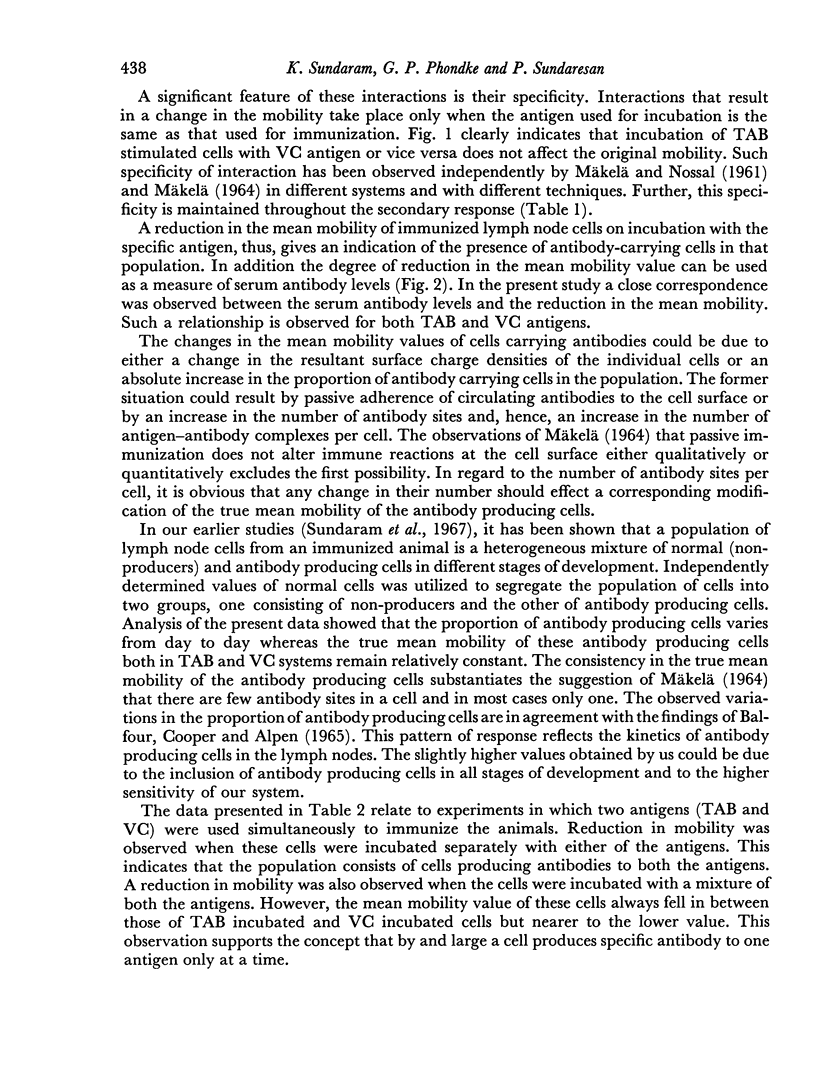
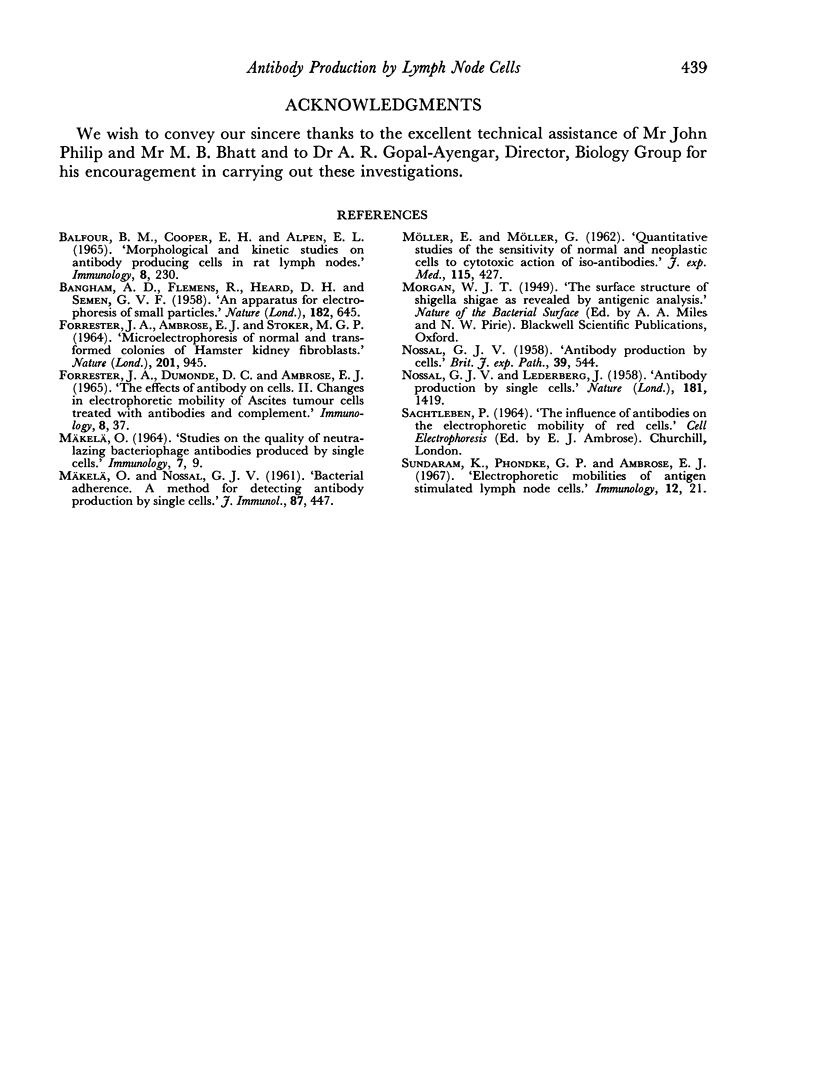
Selected References
These references are in PubMed. This may not be the complete list of references from this article.
- BALFOUR B. M., COOPER E. H., ALPEN E. L. MORPHOLOGICAL AND KINETIC STUDIES ON ANTIBODY-PRODUCING CELLS IN RAT LYMPH NODES. Immunology. 1965 Mar;8:230–244. [PMC free article] [PubMed] [Google Scholar]
- FORRESTER J. A., AMBROSE E. J., STOKER M. G. MICROELECTROPHORESIS OF NORMAL AND TRANSFORMED CLONES OF HAMSTER KIDNEY FIBROBLASTS. Nature. 1964 Feb 29;201:945–946. doi: 10.1038/201945a0. [DOI] [PubMed] [Google Scholar]
- FORRESTER J. A., DUMONDE D. C., AMBROSE E. J. THE EFFECTS OF ANTIBODIES ON CELLS. II. CHANGES IN THE ELECTROPHORETIC MOBILITY OF ASCITES TUMOUR CELLS TREATED WITH ANTIBODIES AND COMPLEMENT. Immunology. 1965 Jan;8:37–48. [PMC free article] [PubMed] [Google Scholar]
- MAEKELAE O. STUDIES ON THE QUALITY OF NEUTRALIZING BACTERIOPHAGE ANTIBODIES PRODUCED BY SINGLE CELLS. I. EVIDENCE INDICATING THAT DIFFERENT CELLS PRODUCE DIFFERENT KINDS OF ANTIBODY AGAINST THE TAIL OF T6. Immunology. 1964 Jan;7:9–16. [PMC free article] [PubMed] [Google Scholar]
- MAKELA O., NOSSAL G. J. Bacterial adherence: a method for detecting antibody production by single cells. J Immunol. 1961 Oct;87:447–456. [PubMed] [Google Scholar]
- NOSSAL G. J. Antibody production by single cells. Br J Exp Pathol. 1958 Oct;39(5):544–551. [PMC free article] [PubMed] [Google Scholar]
- NOSSAL G. J., LEDERBERG J. Antibody production by single cells. Nature. 1958 May 17;181(4620):1419–1420. doi: 10.1038/1811419a0. [DOI] [PubMed] [Google Scholar]
- Sundaram K., Phondke G. P., Ambrose E. J. Electrophoretic mobilities of antigen-stimulated lymph node cells. Immunology. 1967 Jan;12(1):21–26. [PMC free article] [PubMed] [Google Scholar]


